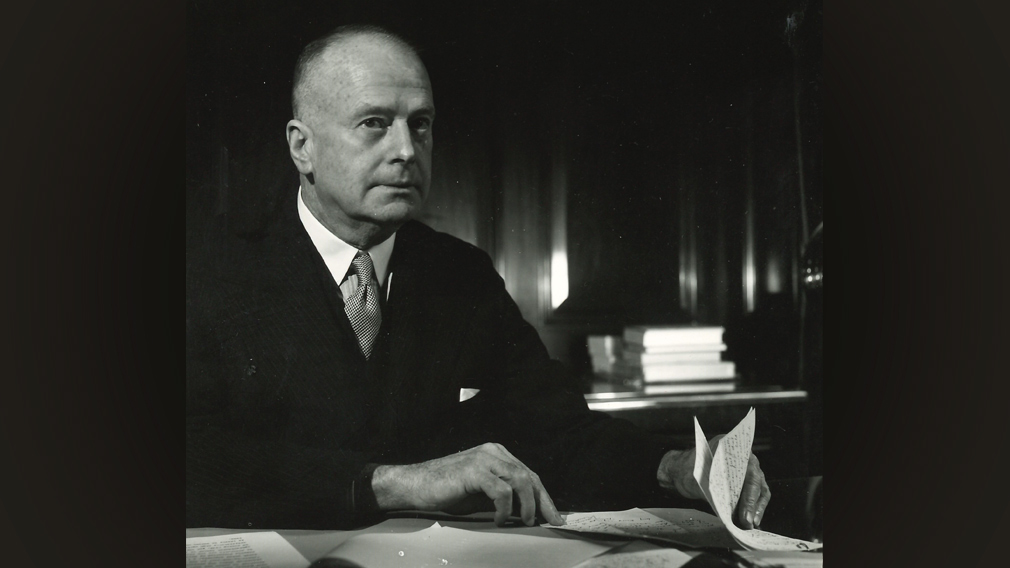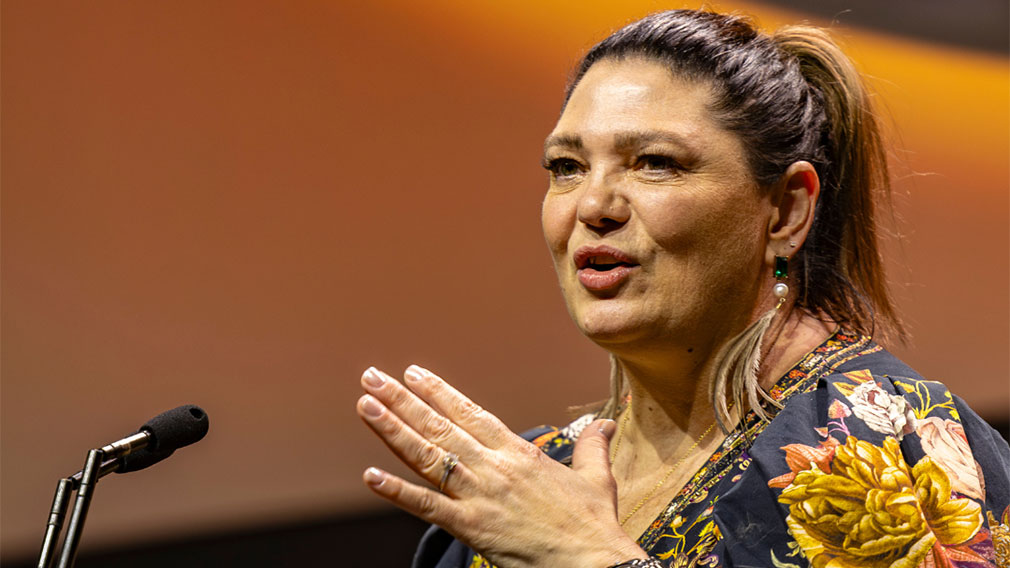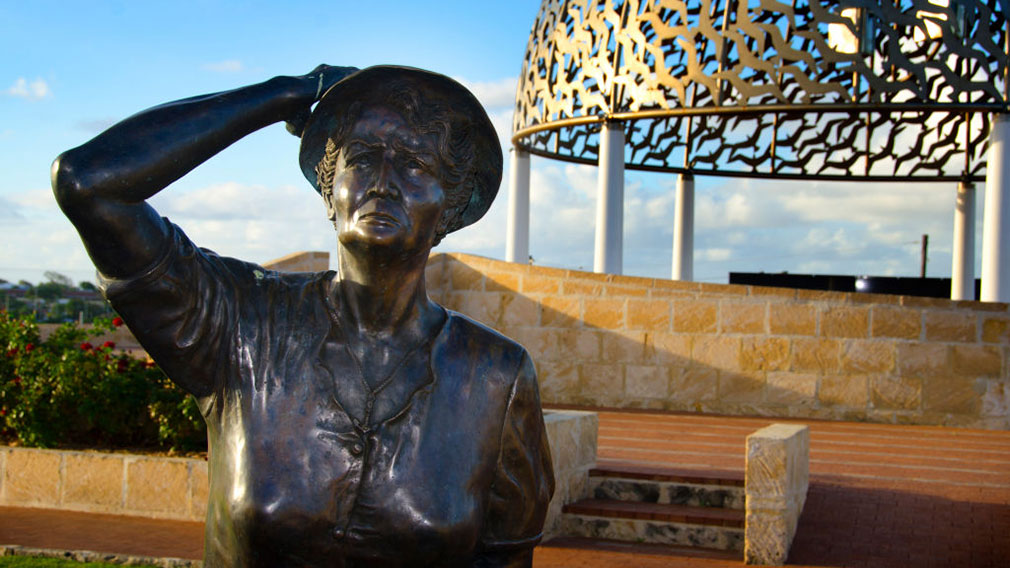How one CEO’s war wounds raised bar for veterans

Thomas Heffer, chief executive of the Bank of NSW from 1945 to 1950. (Westpac Archives)
“Our service men are now coming back to us in small numbers and the flow will soon increase.”
So wrote Thomas Baker Heffer, the newly appointed chief executive of the Bank of New South Wales (which became Westpac), in a note to staff in 1945 as the Second World War wound down.
“Many of these men will feel for some time the effects of their war service, and all will take time to adjust themselves to civilian conditions and their old occupation. I earnestly ask you all to do your best to ensure that these men settle down as quickly and comfortably as possible.
“It is our privilege as well as our duty to take them in hand when they re-join the bank, and to help them overtake the lag in their training. I appeal to all those with whom they work to make this a personal matter and to exercise patience and tolerance especially with the men who have suffered in mind or body while fighting to protect us.”
Heffer’s genuine concern for those returning from the war is palpable in this note, his first to the bank’s staff after succeeding long-term chief Sir Alfred Davidson just months earlier in June 1945. At the time, more than 1900 employees were yet to return to the bank. Some, of course, never would, and for those who did, the struggle would have been both physical and emotional, as Heffer well knew as a former serviceman himself.
His compassion is also unmistakeable in the many other meticulous files he kept on bank staff members who served in the military during the war, all stored in the bank’s archives.
At first glance, his empathy may seem to simply reflect what the nation was feeling at the time.
But a deeper dive into Heffer’s past provides a richer explanation.
As a younger man, he had served in the First Australian Imperial Force during World War I and was wounded twice, sustaining injuries that affected him for the rest of his life. His approach to returning service men and women, arguably far more empathetic than he saw 26 years earlier, doubtless came from this personal experience.

Portrait of Captain Thomas Heffer, 1916. (Westpac Archives)
Born in New Zealand, Heffer joined the bank’s branch in Blenheim at the top of New Zealand’s South Island in 1903, just after his 18th birthday. He worked his way through the ranks, with postings to New Zealand’s Wellington Head Office and in Fiji’s Suva and Lautoka, before transferring to Australia.
As the Great War took hold, Heffer was granted leave from the bank to enlist in June 1915, aged almost 30, and was appointed Lieutenant with the Australian Imperial Forces in the 8th Reinforcements of 19th Battalion.
He left Sydney in December 1915, spent six months training in Egypt and, by July 1916, was in action with the 15th Battalion in France during the Somme campaign.

Heffer (4th row from front, 3rd from right) among officers during training in Egypt, 20 per cent of whom did not survive the war. (The Australian War Memorial)
In February 1917, while in action at Gueudecourt, Heffer’s femoral artery was severed by a shell fragment, the wound later turning septic. He recovered within four months, but was left with a permanent limp. After being promoted to Captain, he was sent back to the front in October 1917.
In action around Villers-Bretonneux in August 1918, Heffer was wounded for a second time, taking shrapnel in the back, chest and arm. Attempts to remove the shell fragments lodged in his spine were unsuccessful, leaving him with chronic pain and difficulty walking, and bringing his military career to an end.
Heffer arrived home in Australia in January 1919 and, after many more months of rehabilitation, was finally fit enough to return to work at the bank’s Sydney Head Office in November, at which time the nation’s recovery from war was overtaken by a new crisis - the world’s last great pandemic, the Spanish Flu.

Thomas Baker Heffer, on his appointment as chief executive of the Bank of NSW in June 1945. (Westpac Archives)
Heffer’s work record shows he resumed his banking career, holding several senior positions throughout the 1920s and 30s, becoming a prominent figure in the chief executive’s office before his appointment as deputy chief executive in 1943.
As the Second World War unfolded, Heffer’s main tasks were to manage the bank’s staff and its relationship with the government, at a time when banks were required to free up staff for the war effort.
A staggering 73 per cent of the bank’s male employees enlisted in the armed forces over the six-year war, radically altering the composition of staff as significant numbers of females joined to fill mainly back office roles. Due to staff shortages, many branches were forced to close.

Heffer’s focus on staff on military leave never wavered, his office keeping meticulous records including a series of index cards with each serving officer’s name and details noted as information came through. Particularly touching are the cards of staff taken prisoner, with Heffer’s office tracing their condition and whereabouts right through to when the lucky ones returned home.
You can almost feel the relief when the entry ‘Missing’ is crossed out to read ‘Safe’, while the sadness of ‘Death Presumed’ still resonates almost 80 years later.

Index cards kept by the Bank of NSW with information on each serving officer. (Westpac Archives)
Heffer’s compassion for the veterans of WWII, evident in his ongoing communication with staff throughout 1946 and beyond, set a new standard for welcoming home those who had served their country and recognising the difficulties veterans faced.
We can see some of that legacy in the way the bank supported returning Vietnam veterans a generation later.
It is a standard the bank continues to this day, as staff commemorate those who serve, every year.
Lest we forget.




